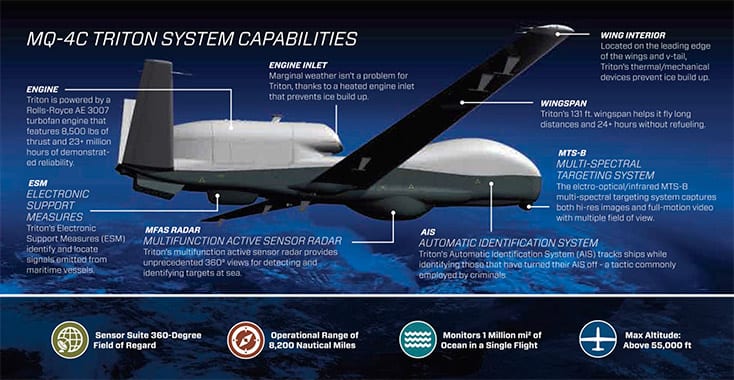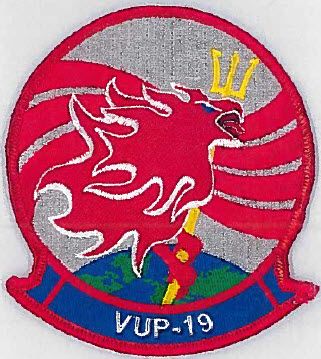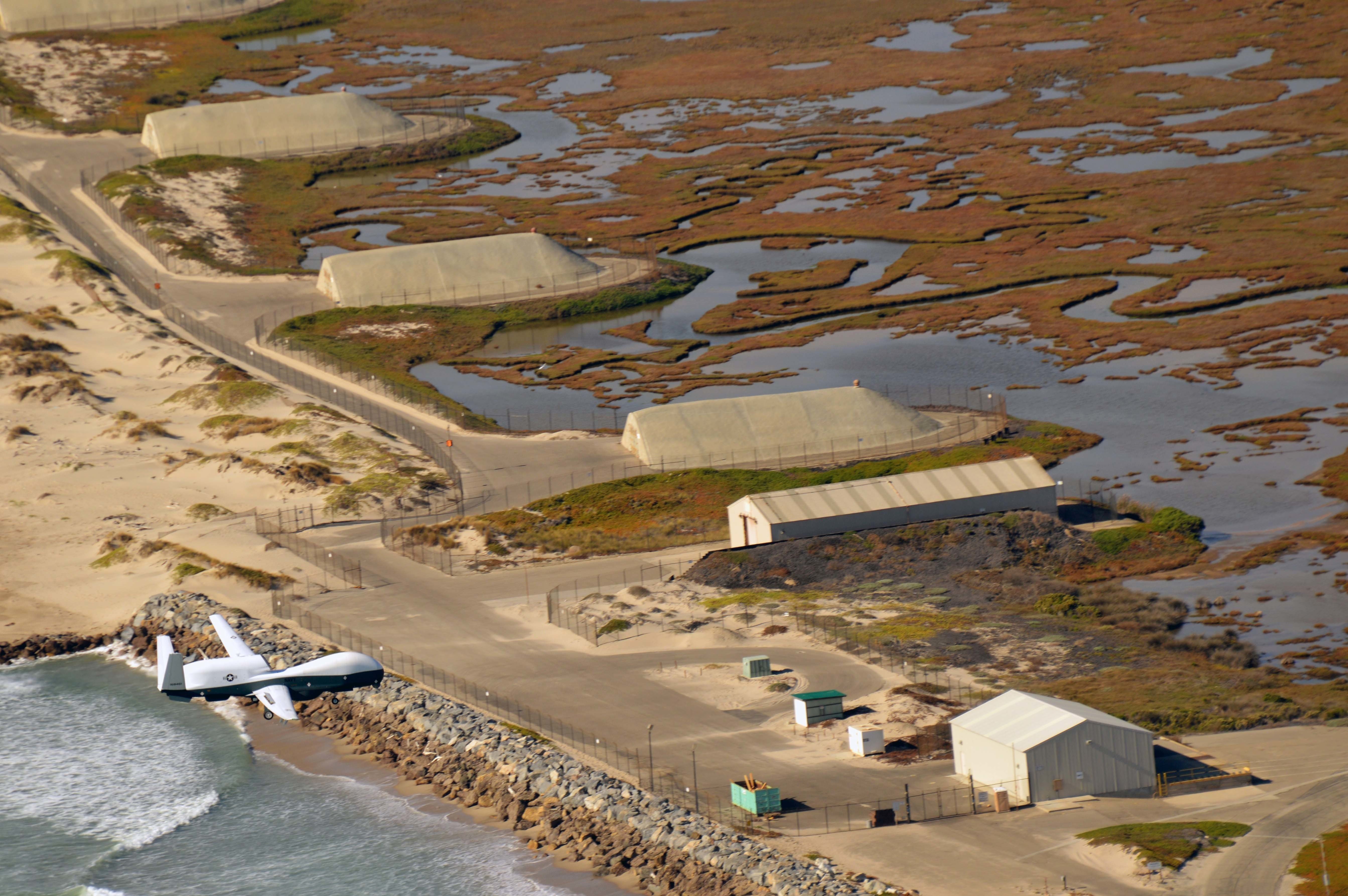As I have argued earlier, the Triton is bringing a whole new layer to the kill web for fleet operations.
Operating at high altitude, the Triton is delivering area wide ISR data for dynamic targeting.
Indeed, one way to look at the way ahead for the integrated distributed force is to understand that new platforms are providing interactive ISR and C2 layers for a kill web approach for dynamic targeting.
Ed Timperlake and I argued in a Space News story published in 2012, that the global fleet of F-35s would provide a significant ISR/C2 layer for the joint and coalition force, which provided redundancy for the space force as well.
The ability of the deployed F-35s — again owned by allies as well as U.S. forces — presents a diversified and honeycombed presence and scalable force. This baseline force is significantly enhanced by reachback to space assets, but the space assets now receive redundancy by being complemented as well by a deployed fleet of flying combat systems. This joint capability means that the value of space-based targets goes down to the Chinese or whomever, and diversification provides significant enhancement of deterrence as well.
In short, in rethinking the way ahead with regard to military space — notably in a period of financial stringency — getting best value out of your entire warfighting enterprise is highlighted. Reorganizing the space enterprise within an overall C5ISR approach enabled by a honeycombed fleet of F-35s is a strategic opportunity of the first order.
The Triton provides another layer for a kill web-enabled force able to operate with redundancy and resiliency.
But to do so, much like learning how to use a data rich aircraft like the F-35, requires technological changes, data management changes, and cultural changes to leverage what the technology provides.
Just having the technology is clearly not enough; training and cultural change are crucial to weave what the new technology COULD do into what the force CAN do.
Clearly, the US Navy is working these challenges.
In 2013, the first Triton squadron was established.
According to the US Navy:
Unmanned Patrol Squadron ONE NINE (VUP-19) was established on October 1st 2013 and was later commissioned on October 28th 2016. As the United States Navy’s first unmanned maritime patrol squadron, VUP-19 is a team of more than 500 active duty, reserve, and civilian personnel which draws its lineage from and honors the rich history of Patrol Squadron ONE NINE (VP-19) “Big Red.”
Established in July of 1946 as VP-907 and re-designated as VP-871 in February 1950, VP-19 finally came to be in February of 1953 and carried that name for 38 years of honorable service. In 1951, the sailors of VP-871 were called upon to participate in the Korean War and it was during this time that the squadron earned its nickname “Big Red” for their role in night interdiction missions, dropping red night illumination flares to support allied air and ground units.
As VP-19, “Big Red” participated in the Vietnam War as well as Operation DESERT STORM along with deployments to Japan, Guam, Alaska, Thailand, Vietnam, the Philippines, Saudi Arabia, and countless detachments around the world. VP-19 was disestablished in August 1991, having operated the PV-2, PBY-5A/6A, P4Y-2/2S, P2V-2/3/5/7, and P-3A/B/C maritime patrol aircraft as well as earning four Navy Unit Commendations, seven Meritorious Unit Commendations, and two Battle Efficiency “E” Awards over its 45 years of distinguished service.
Homeported at Naval Air Station Jacksonville, Florida with a permanent detachment to Naval Air Station Point Mugu, California, and multiple, globally-dispersed detachment sites, VUP-19 will continue VP-19’s storied legacy and dedication to the defense of the United States by launching the US Navy’s newest Intelligence, Surveillance, and Reconnaissance Maritime Patrol asset, the MQ-4C Triton, to the fleet.
The Mission of Unmanned Patrol Squadron ONE NINE is the sustained, successful deployment of the MQ-4C Triton in support of Combatant and Fleet Commanders.
When Ed Timperlake and I visited Jax Navy in 2016, we learned that the US Navy was taking a very different course than the US Air Force to working the training and operations for the Triton fleet, than the USAF has done with its remotely piloted aircraft.
We wrote in 2016:
The team at Navy Jax is building a common Maritime Domain Awareness and Maritime Combat Culture and treats the platforms as partner applications of the evolving combat theory. The partnership is both technology synergistic and also aircrew moving between the Triton and P-8The P-8 pilot and mission crews, after deploying with the fleet globally can volunteer to do shore duty flying Tritons.
The number of personnel to fly initially the Tritons is more than 500 navy personnel so this is hardly an unmanned aircraft. Hence, inside a technological family of systems there is also an interchangeable family of combat crews.
With the P-8 crews operating at different altitudes from the Triton, around 50K, and having operational experience with each platform, they will be able to gain mastery of both a wide scale ocean ISR and focused ASW in direct partnership with the surface navy from Carrier Strike Groups, ARG/MEUs to independent operations for both undersea and sea surface rather than simply mastering a single platform.
This is a visionary foundation for the evolution of the software upgradeable platforms they are flying as well as responding to technological advances to work the proper balance by manned crews and remotes.
During my visit to Jax Navy the week of June 14, 2020, I got a number of updates on the progress and challenges facing integrating Triton into the fleet.
One of those updates was provided by VUP-19. I met with Lt. Samantha (Thompson) Johnson who transitioned from serving as a P-3 pilot to becoming a Triton air vehicle operator and a weapons and tactics instructor at the Maritime Patrol and Reconnaissance Weapons School in Jacksonville.
I also met with LCDR Grant Coddington, the Intelligence Officer for the Squadron.
Rather than quoting either officer directly, I will indicate a number of takeaways I formed from the discussion and will not hold either officer responsible for any errors on my part in my learning process.

The first takeaway, one which was reinforced by other discussions during the visit, was that the Triton operation much like the first few years of P-8 operation, is in its “wheels phase.” There is much to learn about the aircraft, its operations, and the data management challenges being posed by the aircraft as well.
The second takeaway is that the learning process has clarified key aspects of the operational cycle for a Triton orbit. Typically, the squadron operates with five members on a shift: two AVOS or air vehicle operators, two MPOs or Mission Payload Operators and one TACCO or Tactical Coordinator.
The third takeaway was that the personnel coming into Triton and “learning to Triton” come from the manned collection platform side of the house, P-3, P-8 or EP-3.
The fourth takeaway is that unlike Global Hawk, which has its own dedicated pipe to deliver data, the Triton is working through the Navy’s mission data collection systems. This creates challenges in terms of how to best handle the data and how best to ensure it gets delivered to the right place at the right time.
The fifth takeaway is that as software upgradeable aircraft, one paired with the P-8, the Triton is a work in progress. And with a clear focus on informing dynamic targeting, the Triton community is clearly looking forward to coming of the next major upgrade to the mission payload on the aircraft, namely, a multi-INT capability.
The sixth takeaway is that there is clearly a cultural learning process as well. The MPA community has operated throughout its history based on a concept of operations driven by air sortie operations. The Triton is based on a multi-airplane orbit concept of operations which yields a very different data stream than one gets from an air sortied aircraft. And it is one which is layered between what the space systems deliver and what the sortied air collection platforms can deliver.
The seventh takeaway is that the flying side of the house is a work in progress. Notably, with the weather challenges in the Pacific, learning how to manage weather avoidance for a remotely piloted aircraft is a work in progress.
The eighth takeaway is that the Triton in common with other software upgradeable platforms faces the challenge of concurrency between simulators and operational platforms. The operational platform gets and upgrade earlier than the simulators, but the time lag is greater than it should be to close the concurrency gap as efficaciously as possible.
The ninth takeaway is that the Triton community is starting to build some experiential depth, the kind of depth crucial for the knowledge revolution which the Triton can bring to the fleet. And given that the Triton is engaged in tasking, collecting, processing, exploitation and dissemination of information in real time, learning how to do this for the fleet is a crucial challenge facing the future of a kill web enabled force.
And looking forward, as the Triton gains multi-INT capabilities, it will become a more effective platform to contribute to the collaborative effort where multiple sensors can be cross-referenced to provide greater fidelity on targeting, and notably when it comes to smaller vessels of interest as well.
Editor’s Note: Below are a number of Triton stories which provide further information with regard to VUP-19 as well.
U.S. Navy’s Triton Unmanned Aircraft System Arrives in 7th Fleet
PEARL HARBOR, Hawaii – The Navy’s first MQ-4C Triton unmanned aircraft systems (UAS) have arrived in Guam for their initial deployment in the Pacific theater.
Unmanned Patrol Squadron (VUP) 19, the first Triton UAS squadron, will operate and maintain two aircraft as part of an early operational capability (EOC) to further develop the concept of operations and fleet learning associated with operating a high-altitude, long-endurance system in the maritime domain.
The Tritons forward-deployed to Guam, both of which have arrived at Andersen Air Force base as of Jan. 26, will fall under Commander, Task Force (CTF) 72, lead for patrol, reconnaissance and surveillance forces in 7th Fleet.
“The introduction of MQ-4C Triton to the Seventh Fleet area of operations expands the reach of the U.S. Navy’s maritime patrol and reconnaissance force in the Western Pacific,” said Capt. Matt Rutherford, commander of CTF-72. “Coupling the capabilities of the MQ-4C with the proven performance of P-8, P-3 and EP-3 will enable improved maritime domain awareness in support of regional and national security objectives.”
The Navy’s Persistent Maritime UAS program office at Patuxent River, managed by Capt. Dan Mackin, and industry partner Northrop Grumman, worked closely with VUP-19 in preparation for EOC. Prior to flying the aircraft to Guam, the team completed extensive operational test and unit level training.
“This significant milestone marks the culmination of years of hard work by the joint team to prepare Triton for overseas operations,” said Mackin. “The fielding of the Navy’s premier unmanned aircraft system and its additive, persistent, multi-sensor data collection and real-time dissemination capability will revolutionize the way maritime intelligence, surveillance and reconnaissance is performed.”
The MQ-4C Triton will conduct intelligence, surveillance and reconnaissance missions that will complement the P-8A Poseidon and will bring increased persistence, capability, and capacity through its multi-sensor mission payload.
“The inaugural deployment of Triton UAS brings enhanced capabilities and a broad increase in Maritime Domain Awareness to our forward Fleet commanders,” said Rear Adm. Peter Garvin, commander, Patrol and Reconnaissance Group. “VUP-19, the Navy’s first dedicated UAS squadron supported by an outstanding NAVAIR and industry team, is superbly trained and ready to provide the persistent ISR coverage the Navy needs.”
Initial operational capability will include four air vehicles with capacity to support 24/7 operations.
Jacksonville-Based Unmanned Patrol Squadron Changes Commanders
From Commander, Naval Air Force Atlantic Public Affairs
Jacksonville, Florida (NNS) — The commanding officer of the Navy’s Unmanned Patrol Squadron (VUP) 19, transferred leadership during the time-honored change of command ceremony, April 30 aboard Naval Air Station (NAS) Jacksonville.
The time-honored tradition of the change of command traces its origins back to long before the United States became a nation. It serves as an in-person handoff from one commander to another in a show of unity, good order and coordination in front of those under the command.
Cmdr. Kim DaCosta-Azar, a native of Tarrytown, New York, turned over responsibility to Cmdr. Michael Minervini, a native of Chicago, after two years of leading the command of more than 500 Sailors.
DaCosta-Azar served a unique role by leading a geographically dispersed command in NAS Jacksonville and detachment sites in Andersen Air Base, Guam and Naval Base Ventura County Point Mugu, California. Her leadership contributed to the squadron’s first certification for deployment. Additionally, she is responsible for the operations of the Broad Area Maritime Surveillance Demonstrator (BAMS-D), the predecessor to the MQ-4C Triton Unmanned Air System (UAS).
According to DaCosta-Azar, the past two years has been about building a foundation for the Navy’s very first MQ-4C squadron. During this time VUP-19 accomplished many milestones to include the establishment of the following positions: Air Vehicle Operators (AVO), Tactical Coordinators (TACCO), Mission Payload Operators (MPO), and Triton maintainers in support of fleet operations.
DaCosta-Azar added that flying Triton is very different, “while the basics of the piloting are the same, there is a complexity that comes with fly unmanned aircraft.” Nearly 100 AVOs and MPOs have qualified under her command.
“The people are what make Triton successful, my personnel do extraordinary things with challenging resources, because this is not your typical aerial platform,” said DaCosta-Azar. “I cannot express in words how proud I am of the Big Red Team. We are charting a new course in Naval Aviation. There has been a lot of discovery learning, but all of the Sailors of VUP-19 have answered the call at every turn to show up on station. We have arrived and I look forward to seeing what they will accomplish in the future under Commander Minervini’s leadership.”
DaCosta-Azar led her team Sailors through the first-ever operational readiness evaluation for Triton, executing over 300 flight hours of two MQ-4C aircraft, and established permanent presence for the unmanned system in the U.S. 7th Fleet area of responsibility.
Following her assignment at VUP-19, DaCosta-Azar will report to the U.S. State Department to work for the Bureau of International Security and Nonproliferation in the Office of Counter Proliferation Initiatives.
Minervini praised his predecessor for her sound leadership and impact she had on the community.
“Skipper DaCosta-Azar transformed both VUP-19 and the future of the MQ-4C Triton,” said Minervini. “Doubtlessly, her leadership proved critical in laying the foundation for Unmanned Aerial Systems as a new problem-set for America’s enemies and a boon to Naval Aviation.”
VUP-19 was established on Oct. 1, 2013 and commissioned three years later as the U.S. Navy’s first unmanned maritime patrol squadron, VUP-19 draws its lineage from and honors the rich history of Patrol Squadron (VP-19) “Big Red” legacy. The squadron reports to Commander, Patrol and Reconnaissance Wing (CPRW) 11, which is also based aboard NAS Jacksonville. The mission of VUP-19 is the sustained deployment of the MQ-4C Triton in support of Combatant Commanders around the globe.
Navy MQ-4 Triton Flying Operational Missions From Guam
By Gidget Fuentes
USNI News
Almost three months after arriving in Guam, a pair of MQ-4C Triton autonomous, unmanned aircraft have integrated into fleet operations and training flights and stretched the Navy’s maritime domain awareness across the Indo-Pacific, according to the Navy.
The Navy is counting on the Triton, which can operate at greater than 50,000-foot altitudes and at the 2,000-mile-plus range, to provide an unmanned platform for persistent, maritime intelligence, surveillance, and reconnaissance capabilities and work alongside its manned fleet of reconnaissance and surveillance patrol aircraft. The Tritons with Unmanned Patrol Squadron 19 – the Navy’s first unmanned aircraft squadron – arrived in Guam in late January to support CTF-72, which oversees the patrol, reconnaissance and surveillance force in the U.S. 7th Fleet region.
“Bringing Triton forward creates a complex problem set for our adversaries,” Cmdr. Michael Minervini, VUP-19’s commanding officer, said in a statement.
“Our ability to provide persistent ISR to fleet and combatant commanders is unmatched in naval aviation.”
Along with supporting current operations for several Indo-Pacific-based task forces, one Triton drone recently joined in a “close formation” taxiing along with more than a dozen manned aircraft prior to takeoff at Anderson Air Force Base, Commander Task Force 72 officials said.
The radar and sensors-packed Triton drones have been operating from Anderson AFB to provide, according to the Navy, an “early operational capability (EOC) to further develop the concept of operations and fleet learning associated with operating a high-altitude, long-endurance system in the maritime domain.” Tritons’ onboard sensors and radar can track ships at sea, match tracks with automated identification systems and relay that information to shore-side bases or nearby aircraft, for example.
While the Tritons fly from Guam, the “Big Red” squadron of 300 personnel isn’t based in Guam.
A group of VUP-19 aircrew and maintainers are forward-deployed to Guam, but squadron officials and mission operators are based at VUP-19’s home at Naval Air Station Jacksonville, Fla., and a permanent detachment including maintenance personnel reside at NAS Point Mugu, Calif.








